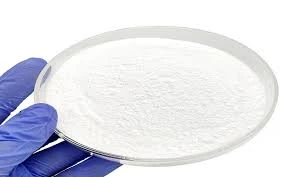Antifoam Water Treatment A Comprehensive Overview
In the realm of water treatment, one often overlooked but crucial aspect is the control of foam. Foam can be a significant problem in various industrial processes, particularly in wastewater treatment facilities. It can lead to operational inefficiencies, equipment damage, and even environmental concerns if not managed effectively. This is where antifoam agents come into play, acting as essential tools in foam management and water treatment solutions.
Foaming occurs due to the presence of surfactants in water, which can be from various industrial processes, detergents, or even the breakdown of organic materials during treatment. While some foaming can be benign, excessive foam can hinder aeration, reduce the efficiency of biological treatments, and cause overflow issues in tanks. Additionally, the presence of foam may obstruct critical measurement instruments used for monitoring water treatment processes. Therefore, controlling foaming is pivotal not only for operational efficiency but also for compliance with environmental regulations.
Antifoam Water Treatment A Comprehensive Overview
Silicone-based antifoams are widely used in various industries due to their effectiveness at low concentrations and their compatibility with a range of temperatures and pH levels. They work by migrating to the surface of the liquid, spreading out, and promoting bubble collapse. However, they can be challenging to remove from treated water and may not be ideal for all applications, especially where reusability of the water is a priority.
antifoam water treatment

Conversely, organic antifoams, often derived from natural sources, tend to be biodegradable and less hazardous. These compounds can be particularly advantageous in industries that prioritize environmental sustainability. While they may not perform as effectively as synthetic alternatives, their low toxicity profile makes them suitable for water treatment applications aimed at producing high-quality effluent.
The application of antifoams in water treatment extends beyond wastewater facilities. Industries such as food and beverage, pharmaceuticals, and oil and gas often face foaming challenges in their processes. In food and beverage production, for instance, excessive foam can affect product quality and yield, while in oil refinery operations, it can disrupt extraction processes. Therefore, careful monitoring and management of foam via antifoam agents are crucial in these sectors to ensure operational efficiency and compliance with industry standards.
Implementing antifoam agents is not without challenges. Operators must routinely assess the effectiveness of the antifoam and ensure that the dosage aligns with the level of foam produced. Overuse of antifoam can lead to issues such as water contamination and can interfere with biological treatment processes in wastewater systems. This calls for a delicate balance where the right concentration of antifoam is applied at the correct time, often involving trial and error to determine the optimal dosage.
Furthermore, advancements in water treatment technologies continue to influence the development of new antifoaming agents. Research is ongoing to explore more environmentally friendly options and innovative methods to enhance the performance of traditional antifoams. This includes the formulation of microemulsions or nano-suspensions that promise better dispersion and longer-lasting effects.
In conclusion, antifoam agents play a vital role in water treatment by mitigating the adverse effects of foaming in various applications. As industries continue to evolve and place greater emphasis on efficiency and sustainability, the ongoing development and application of effective antifoam solutions will remain essential. By navigating the balance between operational effectiveness and environmental responsibility, water treatment processes can be optimized for the future, ensuring cleaner and safer water for all.

